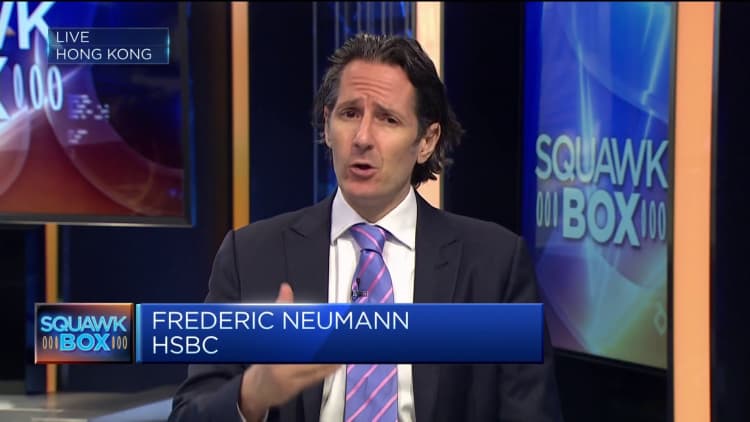
A GrabFood deliver rider rides across the Jubilee Bridge at Merlion Park on July 2, 2022 in Singapore. (Photo by Suhaimi Abdullah/NurPhoto via Getty Images)
Nurphoto | Nurphoto | Getty Images
SINGAPORE — Gig workers in Singapore face “vulnerabilities” that need to be addressed, said the country’s manpower senior minister.
Speaking to “Squawk Box Asia” on Monday, Koh Poh Koon said the pandemic has shown that platform workers in the city state perform a “useful service” and they’re “here to stay” for the foreseeable future.
“Over time, if they undertake this as a longer term career, they [should not be] lagging behind the rest of the population in terms of their longer term needs,” he said. Areas that need to be considered include retirement adequacy, injury compensation and housing, he added.
His comments come after the Singapore government accepted a set of recommendations by a tripartite workgroup to make sure that platform workers are better represented.
This means that such workers will be able to “gain some legal mandate” and negotiate on equal footing with platform companies, Koh added.
Such workers typically work for ride-hailing or food delivery companies such as Grab, GoJek and Foodpanda.
According to Singapore’s ministry of manpower, there are 88,400 platform workers in the country, as of 2022.
Gig workers face ‘significant management control’
The minister clarified that a legal mandate for gig workers is “not exactly the same as a union.”
“There are some areas that unions can negotiate on that [are] irrelevant to the platform, workers and their companies,” he added. “For example, platform workers are not interested in getting a promotion, they are not going to be able to get the annual so-called bonus at the end of the year, neither do they get typical annual sick leave.”
“So it’s quite different because these workers value flexibility, but yet they’re subjected to significant management control,” Koh said.
That includes changes in matching and pricing algorithms on platforms that may affect the livelihood of gig workers.
“The incomes are modest, and they are somewhat more precarious than your typical employees. We think that something that helps them to be able to speak for themselves … would be important to balance the relationship and allow the platform ecosystem to develop in a more sustainable manner,” Koh said.

A recent DBS study showed that gig workers were found to be the most financially stretched group in Singapore, with savings declining year-on-year to an “unhealthy range.”
The expense-to-income ratio of gig workers was 112% in May — “significantly higher” than the median customer’s 57%, DBS said.
It is however “not meaningful” to discuss the possibility of a minimum wage for gig workers as they are free to work as much or as little as they want, Koh pointed out.
“What’s important is to preserve flexibility that both the workers and the platform companies desire. And that’s a very key principle in the discussions.”
Tripartism: Singapore’s ‘secret sauce’
The “Tripartite Workgroup on Representation for Platform Workers” was established in August last year by the manpower ministry — together with Singapore’s labor movement and the Singapore National Employers Federation.
“The important thing to realize is that in Singapore’s labor landscape, our labor, industrial relations are built upon what we call tripartism. That is our secret sauce,” Koh stressed.
“Tripartism involves both government, platform companies in this case, and also platform workers in the unions … the three parties working closely together will form the foundation for that relationship of trust.”

The set of recommendations include the process of obtaining a mandate for representation, the scope of negotiations and formalizing agreements, and how disagreements between representative bodies and platform companies can be resolved.
“The fact that we came up with this series of recommendations is itself proof that tripartism is working,” Koh added.
“As technology changes, platform companies change their business models, there is a dialogue platform for both parties to engage [in] conversation … It has to be win-win.”